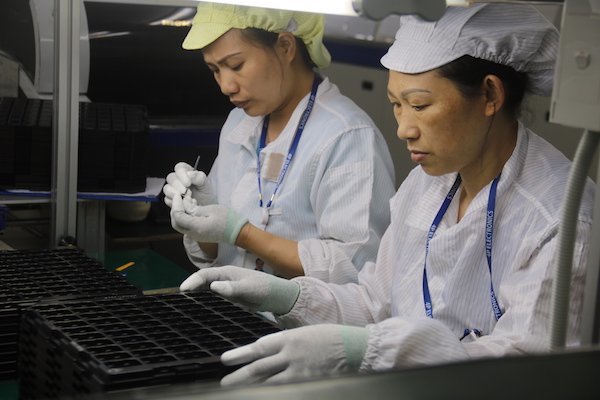Mai Tien Dung, Chair of the Government Office, at the April regular press conference, said Vietnam in the first quarter had attracted a high number of large FDI projects with high quality and high tech content.

Newly registered FDI capital reached $5.1 billion, an increase of 30 percent over the same period last year, while the implemented capital was $4.12 billion, up by 6.2 percent.
Vietnam is now in a golden period of attracting FDI. A survey on Japanese production and business activities in Vietnam released last March showed that 70 percent of Japanese enterprises said they wanted to scale up business in Vietnam, and only 48.7 percent said they wanted to do so in China.
The survey also pointed out that the number of Japanese enterprises wanting to scale down business in China or leave the country accounted for 6.7 percent, while very few enterprises were thinking of leaving Vietnam.
Experts can see the wave of foreign investors relocating their production facilities from Cambodia as well.
The EC last February began an 18-month long process of review which may lead to the suspension of the tax exemption being offered to Cambodia-sourced goods to the 28-country EU. The EBA (Everything but Arms) helps Cambodian goods approach the EU market with the tariff of zero percent.
|
If this happens, Vietnam will benefit from the decision, according to Eric Sidgwick, Vietnam Country Director of ADB, because Cambodia, like Vietnam, also exports textile and garments, and footwear, to Europe and the US. |
If this happens, Vietnam will benefit from the decision, according to Eric Sidgwick, Vietnam Country Director of ADB, because Cambodia, like Vietnam, also exports textile and garments, and footwear, to Europe and the US.
MPI is drafting a new strategy on attracting FDI and will submit it to the Party Politburo in April.
MPI’s Deputy Minister Vu Dai Thang said Vietnam is at the end of the 10-year 2011-2020 socio-economic development period and is building a strategy for the next 10-year development stage.
In the future, projects to be developed in Vietnam must use high technologies with deep processing. They must be friendly to the environment and use a high-quality labor force. The age of low production costs and cheap labor force is over.
At present, enterprises recognized as ‘high-technology enterprises’ can receive incentives for the entire production process. But Thang said in the future only the production stage using high technology can receive the incentives.
In addition, Vietnam will continue giving incentives to R&D, but only to added value created domestically, not to imported components.
Thang hopes that Vietnam will be the destination for investors in Asia, not an alternative destination for them to disperse risks.
RELATED NEWS
Vietnam surpasses China in FDI prospects
High labor cost emerges top risk for Vietnam’s FDI attraction
Kim Chi
 The Ministry of Planning and Investment (MPI) says it will change the current policy on attracting and using FDI and begin to offer investment incentives more selectively.
The Ministry of Planning and Investment (MPI) says it will change the current policy on attracting and using FDI and begin to offer investment incentives more selectively.